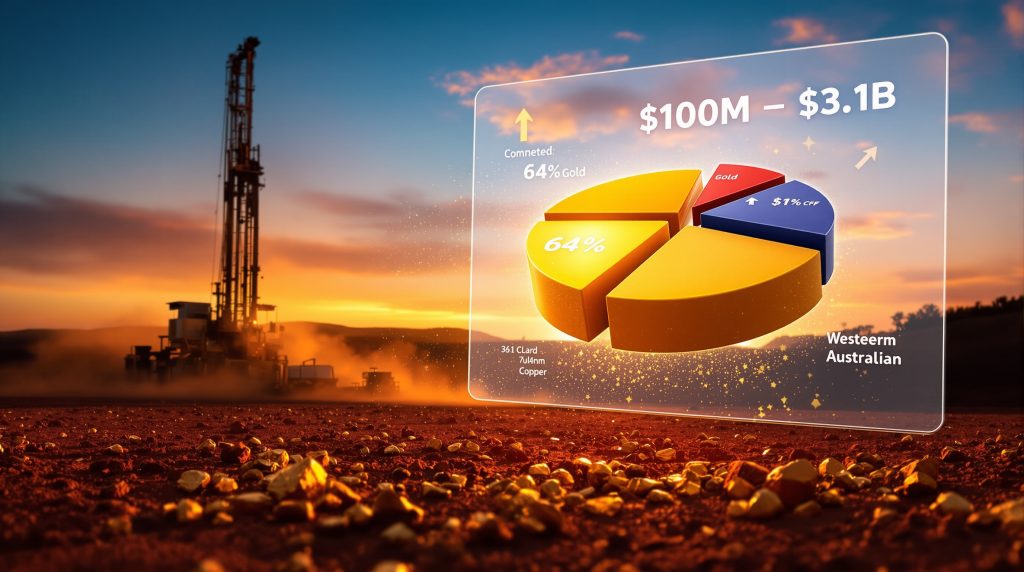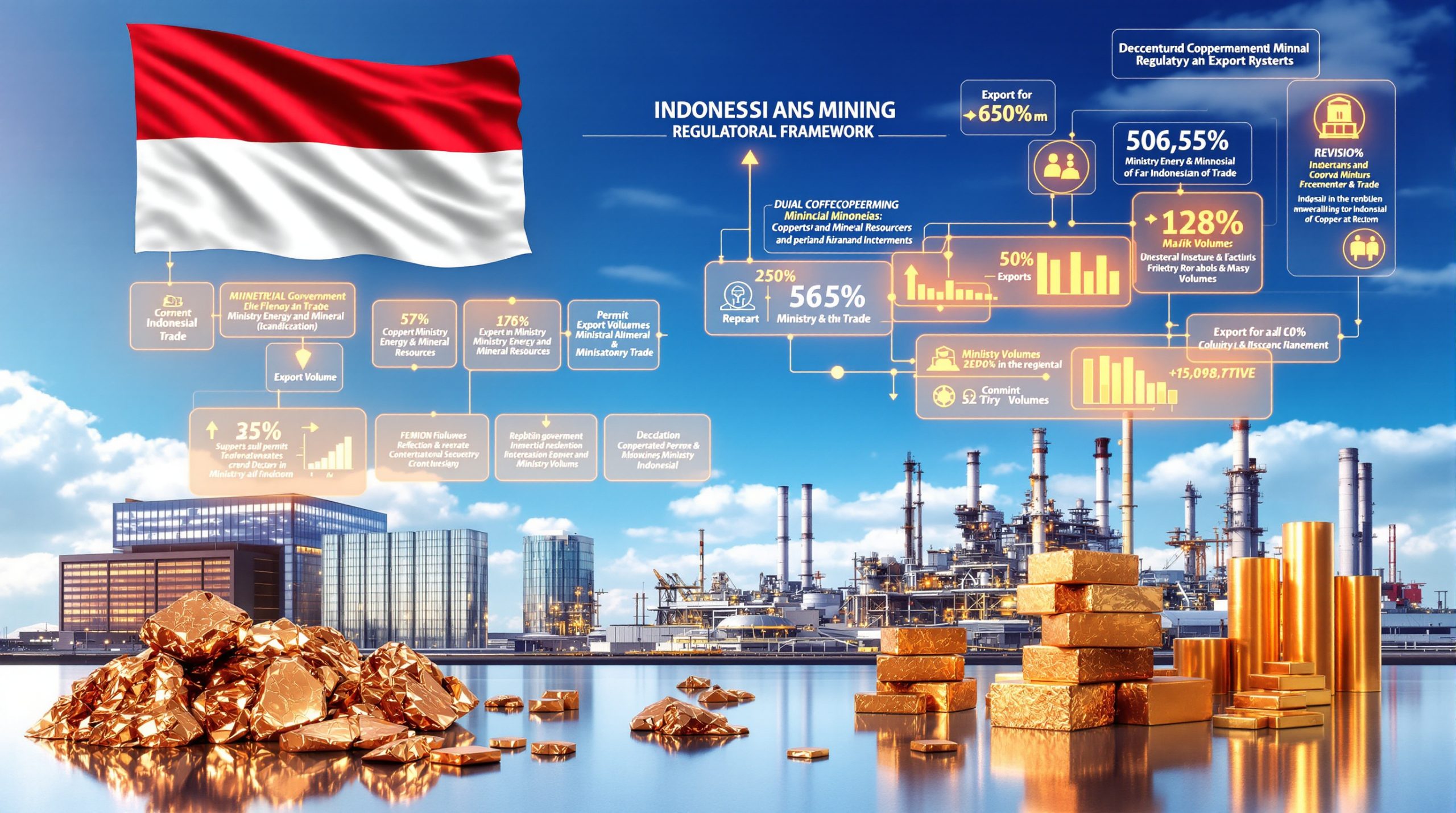What is the Exploration Incentive Scheme (EIS)?
The Exploration Incentive Scheme represents Western Australia's flagship initiative designed to stimulate mineral discovery by providing financial support for early-stage exploration. Operating continuously since 1992, this program significantly reduces financial barriers for companies undertaking high-risk exploration activities in underexplored regions by covering up to 50% of direct drilling costs.
Over its three-decade history, the EIS has evolved from focusing primarily on deep drilling to test basement geology to a comprehensive program incorporating geophysics co-funding and energy analysis. The scheme operates through competitive annual funding rounds, with applications assessed by a technical committee comprising geoscientists from the Department of Mines, Industry Regulation and Safety (DMIRS).
Since inception, the EIS has distributed over $140 million in grants according to the WA Department of Mines, Industry Regulation and Safety's 2023-24 Annual Report. This substantial investment has generated significant economic returns for Western Australia, with research showing approximately $5.50 in direct exploration expenditure generated for every $1 of government funding.
The program's selection criteria emphasize geological merit, exploration methodology, innovation, contribution to geoscience knowledge, and regional prospectivity, ensuring funds are directed toward projects with the highest potential for meaningful discoveries.
Evolution and Impact of the Program
The economic impact of the EIS extends far beyond direct exploration spending. By reducing the financial risk associated with early-stage mineral exploration insights, the program has helped catalyze numerous discoveries that have progressed to resource definition and, in some cases, mine development.
A comprehensive 2019 report by Deloitte Access Economics commissioned by the WA government found the program generated approximately $165 million in exploration expenditure from $30 million in government funding over a five-year period. When accounting for the broader economic multiplier effect, including job creation, service industry growth, and eventual mining operations, the return on investment becomes even more substantial.
Historical successes supported by EIS funding or data include contributions to the Tropicana Gold Mine discovery, which benefited from EIS geophysical data, and the Nova-Bollinger nickel-copper discovery, which utilized publicly available EIS-funded geophysical surveys according to GSWA acknowledgments.
How Does the Latest $6.6 Million Funding Round Work?
The Western Australian government recently announced 39 successful applicants for Round 32 of the EIS Co-funded Drilling Program, allocating $6.6 million to support exploration projects over the next 12 months. As confirmed by Mines and Petroleum Minister David Michael, all drilling programs for exploration must be completed before November 2026, with recipients required to submit comprehensive reports on their findings.
This funding round represents a significant commitment to advancing mineral exploration across the state, with projects selected through a rigorous assessment process that evaluates geological merit, exploration methodology, and potential contribution to the state's geoscientific knowledge.
Upon completion of funded drilling programs, companies must submit detailed technical reports and data to DMIRS within 60 days. This information becomes publicly available through the Western Australian Mineral Exploration (WAMEX) database after a 12-month confidentiality period, continuously expanding the state's valuable geoscience knowledge base.
Focus on Gold Exploration
Gold exploration dominates the current funding round, with 64% of approved applications targeting gold either as a primary target or alongside other minerals. This strong focus reflects sustained industry interest driven by gold prices that reached record highs in 2024, exceeding USD $2,400 per ounce according to the World Gold Council's "Gold Price Performance Q3 2024" report. As of October 2025, gold prices remain elevated above USD $2,300 per ounce.
Western Australia's position as a premier gold-producing region further explains this focus. The state produced 177 tonnes of gold in 2023-24, representing approximately 70% of Australia's total gold production according to the Government of Western Australia's "Western Australian Mineral and Petroleum Statistics Digest 2023-24."
Minister David Michael emphasized the government's commitment to "positioning WA as a global supplier of critical and strategic minerals" and highlighted how the scheme "continues to drive early-stage discoveries, opening the door to new mines, regional jobs and long-term economic growth."
What Types of Projects Qualify for Drilling Grants?
The EIS grants are open to exploration companies and individual prospectors with valid mining tenements in Western Australia. Both local and international companies with Australian subsidiary registration and WA tenements can apply, provided they meet all eligibility requirements under the program guidelines.
The competitive selection process evaluates applications based on a weighted scoring system: geological merit and exploration rationale (30%), technical approach and methodology (25%), innovation and new exploration concepts (20%), contribution to geoscience knowledge (15%), and regional significance and prospectivity (10%).
This rigorous assessment ensures funding is directed toward projects with the highest potential for meaningful discoveries and contribution to the state's geoscientific knowledge base.
Funding Categories and Limitations
The program offers several funding streams with varying maximum allocations according to DMIRS's "Exploration Incentive Scheme Co-funded Drilling Program Round 32 Guidelines" (2025):
| Grant Category | Maximum Funding | Target Applicants | Purpose |
|---|---|---|---|
| Multi-hole drilling | Up to $180,000 | Exploration companies | Multiple exploration holes |
| Deep drilling | Up to $220,000 | Exploration companies | Single deep exploration holes (>500m) |
| Prospector grants | Up to $40,000 | Individual prospectors | Small-scale exploration |
All funding operates on a cost-sharing basis, covering up to 50% of eligible direct drilling costs, whichever is less. This structure ensures companies maintain financial commitment to their projects while receiving substantial support to mitigate exploration risk.
The application process follows a predictable timeline, with applications typically open for 6-8 weeks, followed by an 8-10 week technical assessment period. Ministerial approval and announcement generally occur 2-4 weeks after assessment, making the total process from opening to announcement approximately 4-5 months.
What Success Stories Have Emerged from Previous Rounds?
Several companies have reported significant discoveries from EIS-supported drilling programs. Lord Resources recently announced success from previous round funding at its Ilgarari Project, where co-funded drilling intersected primary copper mineralization, advancing understanding of this prospective region.
Copper exploration has also shown promising results, exemplified by Redstone Resources' recovery of a 10-meter zone of continuous copper mineralization at its Chatsworth prospect within the West Musgrave Project through EIS-supported drilling activities.
Research suggests that approximately 1 in 20 EIS-funded drilling programs leads to a subsequent mineral discovery that progresses to resource definition, according to DMIRS's "EIS Program Effectiveness Review" (2020). While this may seem like a modest success rate, it reflects the inherently high-risk nature of mineral exploration, and the economic value of successful discoveries far exceeds the exploration investment.
Historical Exploration Breakthroughs
Beyond recent successes, the EIS has contributed to several significant historical discoveries. The Tropicana Gold Mine discovery was partly supported by earlier EIS geophysical data, according to the Geological Survey of Western Australia's "Major Gold Discoveries Supported by EIS Data" (Report 2015/8).
Similarly, the Nova-Bollinger nickel-copper discovery benefited from publicly available EIS-funded geophysical surveys, as acknowledged by Sirius Resources NL in their 2012 announcement and subsequent GSWA reports.
These success stories demonstrate how government support through the EIS has helped unlock mineral potential that might otherwise have remained undiscovered due to the high financial risk associated with early-stage exploration.
How Does the Geophysics Co-funding Program Complement Drilling Grants?
The EIS has expanded beyond drilling support to include a Co-funded Geophysics Program, which supports advanced geophysical surveys that help companies identify drilling targets. Established in 2018 as an expansion of the EIS, this program provides up to $150,000 or 50% of survey costs for eligible projects.
The geophysics program was strategically designed to help companies generate drill targets before committing to expensive drilling programs, effectively de-risking exploration at an earlier stage. This approach recognizes that modern mining industry evolution increasingly relies on sophisticated geophysical techniques to identify targets beneath cover or in complex geological settings.
Eligible Geophysical Methods
According to DMIRS's "Eligible Geophysical Methods" guidelines (2025), the program supports a wide range of geophysical techniques:
- Gravity surveys (ground and airborne)
- Magnetic surveys (ground, airborne, downhole)
- Electromagnetic surveys (various configurations)
- Induced polarization surveys
- Seismic surveys (reflection and refraction)
- Radiometric surveys
Integrated Exploration Approach
Sipa Resources exemplifies successful utilization of this program, having enhanced prospectivity at its Barbwire Terrace lead-zinc-silver project through co-funded ground gravity surveys. This case demonstrates the intended use case: geophysics informing subsequent drilling decisions.
The combination of geophysics and drilling co-funding creates a comprehensive support framework that addresses multiple stages of the exploration process, from initial target generation through to discovery confirmation. This integrated approach recognizes the complementary nature of these exploration techniques and provides a more holistic support system for explorers.
Looking ahead, applications for Co-funded Geophysics Venture 3 will open on February 2, 2026, representing the third round of this increasingly important component of the EIS program.
Why Are WA Government Drilling Grants Critical for Resource Development?
According to Mines and Petroleum Minister David Michael, the primary purpose of the EIS is to mitigate financial risks associated with early-stage exploration, enabling companies to pursue higher-risk targets that might otherwise remain untested.
This risk mitigation is crucial given the statistical realities of mineral exploration. Industry data from MinEx Consulting's "Global Exploration Success Rates" (2023) indicates that approximately only 1 in 100 exploration projects results in a mining operation. With average costs of bringing a mineral deposit from discovery to production ranging from AUD $500 million to $2 billion according to the Australian Mines and Metals Association's "Project Development Costs Analysis" (2024), early-stage exploration represents the highest risk phase with lowest success rates.
By providing 50% co-funding, the EIS effectively reduces the cash cost of exploration drilling by half, allowing companies to test additional targets with the same budget, pursue higher-risk but potentially higher-reward targets, and extend exploration programs during periods of low commodity prices.
Strategic Importance for Critical Minerals
The Western Australian government views the EIS as a strategic investment in securing the state's position as a global supplier of critical and strategic minerals essential for the clean energy transition. The program specifically encourages exploration for battery metals and other resources needed for renewable technologies.
According to the Government of Western Australia's "Western Australian Critical Minerals Strategy" (2022), the following minerals have been designated as critical priorities:
- Lithium
- Rare earth elements
- Cobalt
- Nickel
- Copper
- Graphite
- Vanadium
- High-purity alumina
Western Australia is already positioned as a globally significant supplier of multiple battery minerals, including being the world's largest lithium producer (approximately 50% of global production in 2024) and the fourth-largest nickel producer globally, with significant copper resources in development.
What Economic Benefits Do WA Government Drilling Grants Generate?
Successful exploration programs supported by EIS grants frequently lead to new mining operations, creating substantial employment opportunities in regional Western Australia. The flow-on effects extend to supporting industries, infrastructure development, and community growth.
Context for these benefits can be found in Western Australia's broader mining industry statistics. According to the Chamber of Minerals and Energy WA's "Workforce Census 2024," the WA mining industry directly employed approximately 147,000 people as of June 2024, representing approximately 10% of total WA employment. Regional employment multipliers suggest each mining job supports 3-4 additional jobs in services and support industries.
The economic contribution is substantial, with mining contributing approximately $213 billion to WA's Gross State Product in 2023-24, representing approximately 48% of state economic output according to the Government of Western Australia's Department of Treasury "Economic Profile 2024."
Long-term Economic Growth
Minister Michael emphasized the intergenerational benefit aspect, stating that by "unlocking the next generation of mineral projects," the EIS delivers benefits that will "support generations of Western Australians" through sustainable resource development and associated economic activity.
This long-term perspective recognizes that while the initial investment in exploration incentives is relatively modest compared to the state's total budget, the potential returns from successful discoveries can generate decades of economic benefits through royalties, taxes, employment, and regional development.
The economic multiplier effect of successful mineral discoveries is particularly significant in regional areas, where mining operations often become the economic backbone of communities, supporting diverse service industries and infrastructure development.
How Do Companies Apply for Future Funding Rounds?
Applications for Round 33 of the Co-funded Drilling Program will open on Monday, February 2, 2026. Simultaneously, the government will accept applications for Co-funded Geophysics Venture 3 and Co-funded Energy Analysis Series 9 programs.
The application process requires online submission through the DMIRS portal and includes several key components according to DMIRS's "How to Prepare a Competitive EIS Application" guide (2025):
- Executive summary (1-2 pages)
- Tenure details and location maps
- Geological setting and exploration history
- Exploration rationale and targeting
- Proposed drilling/survey program
- Budget and co-funding request
- Expected outcomes and data management
- Company capability and experience
Application Strategy Best Practices
Successful applications typically demonstrate strong geological reasoning, innovative exploration approaches, and clear potential for significant discoveries. Companies should prepare comprehensive technical documentation, including detailed drilling plans, 3D geological modelling insights, and budget breakdowns.
Historical data suggests typical application success rates range from 20-35% depending on round competitiveness and available funding. Well-prepared applications with strong geological merit and clear exploration rationale have higher success rates.
Strategic considerations that may improve application success include:
- Demonstrating innovative exploration approaches
- Targeting underexplored regions
- Clearly articulating how results will advance regional geoscience knowledge
- Aligning with the state's critical minerals strategy where applicable
What Makes Western Australia's Drilling Grant Program Unique?
Western Australia's EIS program stands as one of the most comprehensive and successful government-backed exploration initiatives globally. The program's longevity (operating continuously since 1992), substantial funding levels, and demonstrated economic returns distinguish it from similar programs in other mining jurisdictions.
Average annual funding has ranged from $4-7 million over the past decade, with recent years seeing increased funding to $6-8 million annually according to various WA State Budget Papers from 2015-2025. This consistent commitment reflects the government's recognition of exploration as a foundational element of the state's resource-based economy.
Commitment to Public Geoscience
A distinctive feature of the EIS is its requirement for funded companies to release exploration data to the public domain after a confidentiality period. According to requirements under the Mining Act 1978 (WA) and Mining Regulations 1981, all drill hole data must be submitted to DMIRS within 60 days of completion, becoming publicly available through WAMEX after a 12-month confidentiality period.
This approach has significantly enhanced Western Australia's geoscience database, creating a valuable public resource that attracts further investment. Over 8,000 drill holes have been added to the public database through the EIS program since inception, along with extensive geophysical survey data covering thousands of square kilometers.
The cumulative effect of this public data release policy has been to establish Western Australia as a global leader in public geoscience information, reducing technical risk for explorers and enhancing the state's attractiveness for exploration investment.
FAQ: Western Australian Government Drilling Grants
How much funding can exploration companies receive?
Companies can receive up to 50% of direct drilling costs, with maximum caps ranging from $40,000 for prospectors to $220,000 for deep drilling projects, depending on the application category. All funding operates on a cost-sharing basis, ensuring companies maintain financial commitment while receiving substantial support.
What minerals are prioritized in the current funding round?
While the program is open to all minerals, the current round shows strong interest in gold exploration (64% of applications), with additional focus on copper and other critical minerals needed for clean energy technologies. The government's strategic priorities include lithium, rare earth elements, nickel, copper, and other battery metals.
Can international companies apply for EIS grants?
Yes, international companies with valid Western Australian mining tenements are eligible to apply, provided they meet all other program requirements and have appropriate business registration in Australia. The program is designed to encourage global exploration investment in Western Australia.
What happens to the exploration data collected through funded projects?
All data from EIS-funded projects must be submitted to the Western Australian government and becomes publicly available after a confidentiality period, contributing to the state's geoscience knowledge base. This public data release policy has significantly enhanced Western Australia's geoscience database, creating a valuable resource for future exploration.
How competitive is the application process?
The program is highly competitive, with success rates typically ranging from 20-35% depending on the funding round. Applications are assessed based on geological merit, technical approach, innovation, contribution to geoscience knowledge, and regional significance. Well-prepared applications with strong geological merit have higher success rates.
When do applications open for the next funding round?
Applications for Round 33 of the Co-funded Drilling Program, as well as the Co-funded Geophysics Venture 3 and Co-funded Energy Analysis Series 9 programs, will open on Monday, February 2, 2026. Potential applicants should begin preparing their submissions well in advance of this date.
Further Exploration
Readers interested in learning more about Western Australia's mineral exploration programs can explore related educational content available through the Western Australian Department of Mines, Industry Regulation and Safety website, which provides comprehensive information about the Exploration Incentive Scheme and application guidelines.
For companies considering application to the program, DMIRS offers workshops and guidance materials to help prepare competitive submissions. Understanding the technical assessment criteria and focusing on the geological merit of proposed projects can significantly improve chances of success in this competitive funding program.
Western Australia's commitment to supporting mineral exploration through the EIS reflects the state's recognition of the critical role that new discoveries play in sustaining its world-class mining industry and securing its position as a leading supplier of both traditional and critical minerals for global markets.
Want to Profit from Major ASX Discoveries Before the Market Reacts?
Discovery Alert's proprietary Discovery IQ model delivers immediate notifications on significant ASX mineral discoveries like those potentially emerging from EIS-funded drilling projects. Visit the Discovery Alert discoveries page to explore historical returns from major mineral finds and position yourself ahead of the market.




